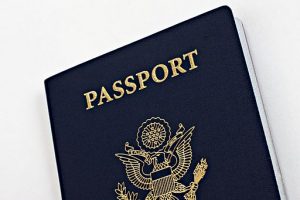Passport applications and renewals are surging at an all-time high, so if you’ve been meaning to renew your old passport or need to apply for a new one, we’d like to give you some tips to make the process as painless as possible.
The reason for the surge dates back to 2007, when the Western Hemisphere Travel Initiative of 2007 required all those traveling to the United States from other countries to show a valid passport or approved documentation. This changed from the days when US citizens could travel between Canada and Mexico with just their driver’s licenses. In 2007, 18 million passports were issued, and now all those are approaching or have exceeded their 10-year issuance limit.
Another reason for the record number of applications and renewals is the Department of Homeland Security’s implementation of phase four of the REAL ID Act. Beginning January 18, 2018, a driver’s license was no longer sufficient identification for boarding an airplane if the state didn’t comply with the mandated standards set by the DHS.
So, how can you get that little blue book in the shortest time possible so you don’t encounter any travel headaches? Here are our five tips.
 1. What should be obvious by now is this: don’t wait until the last minute to start. If you have a few months before your trip, that may not be enough time. Expediting is possible, but due to the glut of applications and renewal requests, don’t push your luck.
1. What should be obvious by now is this: don’t wait until the last minute to start. If you have a few months before your trip, that may not be enough time. Expediting is possible, but due to the glut of applications and renewal requests, don’t push your luck.
2. For you procrastinators, there is a service you can pay to handle the process for you. Called govWorks, it exists to change the way people interface with federal and foreign governments. The company can accelerate processing for travel visas, passports, and other travel documents by facilitating access to a customer’s information from a secure platform.
govWorks CEO Adam Boalt said, “Many countries will not accept a passport with less than six months of remaining validity. If possible, you should get a passport renewal at least nine months before it expires.”
3. If you travel internationally frequently, consider applying for a 52-page passport. Many people aren’t even aware this is an option, but that almost doubling in capacity can really come in handy when each country requires two stamps for entry and exit from its state. When a page can only accommodate four stamps, the standard 28-page booklet can fill quickly.
4. If you plan to travel with your children and live in a state that is currently out of compliance with the REAL ID Act, get passports for yourself and your children. Keep in mind that children’s passports aren’t issued for the same length of time as adult passports. They are only good for five years and will be required for children who travel with their parents in the continental US if their parents don’t have REAL ID-compliant documentation from their state.
5. Consider having two passports. Boalt confirmed it is possible, and sometimes necessary, to simultaneously hold two valid passports. “Some countries reject passports that contain visa stamps from certain other countries, such as traveling into Israel if you have a stamp from Saudi Arabia. Second passports are also helpful for frequent travelers who might need to apply for multiple visa applications on an ongoing basis,” Boalt said.
Bonus: Finally, don’t assume a passport is all you need to travel to certain destinations. Thoroughly investigate all necessary documentation before planning an itinerary. If you don’t, your biggest travel headache could occur at the airport gate when you are turned away because you lack the appropriate travel visa. To help travelers avoid this frustration, Boalt created Travel Visa, a division of govWorks. Do some investigating and make sure you have what you need before you ever leave the house,
Are you an international traveler? Do you have any passport success stories or horror stories? What have you done to get your passport renewed? Share your tales with us in the comments below, on our Facebook page, orin our Twitter stream.
